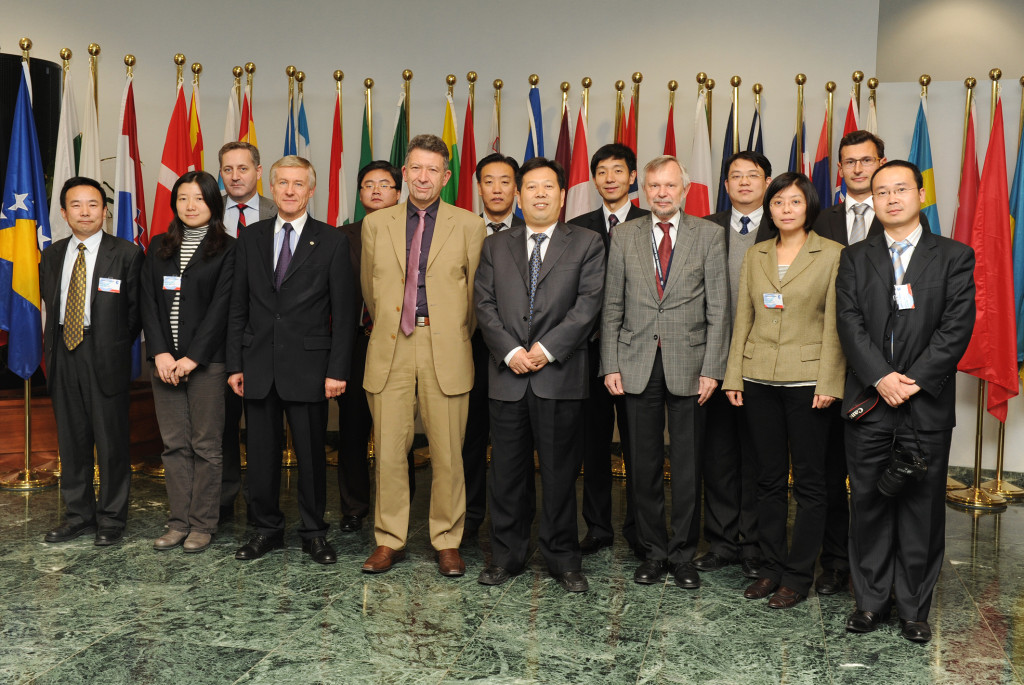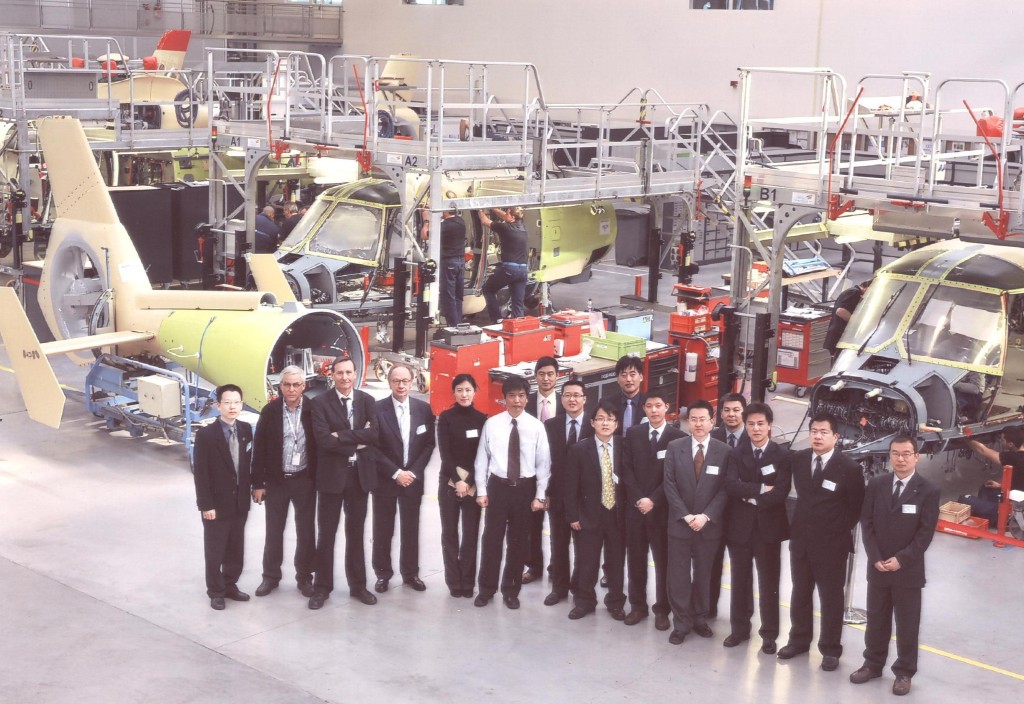Steady growth in China’s aviation industry has seen its total number of flights reach around 10,000 per day, the third highest in the world behind the European Union (EU) and the United States (US). Starting from practically a blank page in the 1980s, China’s civil aviation industry has attained a certain level of maturity in some respects, but its foundations need further strengthening in order to accommodate the increasing volumes of air traffic.
The EU-China Civil Aviation Project (EUCCAP) has been integral in helping China to build its capacity by providing assistance and training in rulemaking, aircraft incident/accident investigation, general aviation, aviation security, initial airworthiness, continuing airworthiness and maintenance, flight operations and air traffic management (ATM), amongst other things. Technical Assistance Team Leader of the EUCCAP Frederic Campagnac and EUCCAP Project Officer Ren Lizhu spoke to EURObiz’s Carl Hayward to give some background on the project and discuss some of the achievements to date.
Financed and implemented in partnership between the EU and the PRC government’s Ministry of Commerce (MOFCOM), with the Civil Aviation Administration of China (CAAC), the EUCCAP technical assistance cooperation project commenced on 28th October, 2010, with the overall objective of:
“[addressing] critical bottlenecks within the rapidly expanding civil aviation sector and [integrating] more deeply the lesser developed regions into China’s civil aviation system and [facilitating] their economic development.”
Due to conclude on 28th October, 2014, the project is divided into horizontal and vertical components. The horizontal component, dealing with strategic, technical and practical issues, is officially led by Shao Fengru and a project task force nominated by the CAAC. A Technical Assistance Team (TAT), providing technical support to this task force, is made up of a consortium consisting of Bureau Veritas, Egis Avia, Lufthansa Consulting and Ecorys. As of 31st May, 2013, the EUCCAP has held training and workshops for 538 people from the CAAC headquarters and regions, representing more than six per cent of the total CAAC headcount.
Cooperation
The vertical component focuses on academic training and degree programmes for pilots and in the area of ATM, which is implemented by a consortium composed of the École Nationale de l’Aviation Civile (ENAC) from France, and the Civil Aviation University of China (CAUC).
The project launched with a thorough, six-month assessment of the needs of the CAAC. Once this had been properly evaluated the EUCCAP initiated workshops on various regulations and also took study tours to Europe. Each tour dealt with a specific department of the CAAC, with multiple activities often dedicated to a single issue or sector.
Campagnac says that this period of assessment and study allowed them to fully understand exactly where they were at, and what needed to be done next:
“Starting from the second year of the project, we just went much further with providing technical assistance, because we then knew where China stood in these areas. We were able to go deeper to better understand CAAC’s needs and also what we could bring.”
One remarkable aspect of the project is that for all technical exchanges the EUCCAP has a direct line to each department within the CAAC. Campangac says that although they can point towards data and charts to demonstrate the progress that the project has made, the relationship that they have forged with the CAAC actually represents one of the more significant achievements to date.
Early progress on the project proved difficult. Campagnac explains that a cold reception was received from certain departments within the CAAC. Chinese officials, used to dealing with counterparts from the same level of government, were not so open to dealing with industry players[l2] .
The consortium backing the project, though, was representing the EU from a regulation, not an industry, point of view. Campagnac says that once the CAAC recognised this and realised that the project presented a good opportunity to better understand the EU, things began to progress more smoothly.
Safety first
The EUCCAP has been instrumental in helping the CAAC to build greater competence in aviation safety, which is a core facet of the EUCCAP.
Because the US and Europe are the most involved in aircraft manufacture, most aviation safety regulation are generated by these states, with the objective of achieving a certain global level of safety. The concepts of how the safety controls are implemented in the US and Europe are different, but the actual regulations have been harmonised quite closely. This is important as aircraft are often sold between continents.
Although originally inspired by the Federal Aviation Administration (FAA) regulations, it is noteworthy that because China’s aviation industry is maturing quickly they are now writing safety regulations adapted to their unique situation. They have begun to look at the European situation to try and see how they can draw on some of its experience to suit their own circumstances.
The speed of China’s development, coupled with its lack of resources (experts, pilots, airspace etc), has engendered a steep safety learning curve.
“This is a particular problem for China,” says Campagnac, “They have a basic lack of resources in this area and they are still growing too fast.”
“China’s safety practices couldn’t be the same as in the US or in Europe because there are guys there who have been doing the same work for 30 years,” he continues, “For instance, not a lot of training is required for new inspectors in Europe because, generally speaking, they already come with a significant background and will have mentors to help them learn on the job. In China there is a great need for new inspectors, but it is a difficult to find staff with an existing level of expertise.”
The EUCCAP has helped plug the knowledge gap by providing ‘train the trainer’ programmes in safety. They are also assisting by issuing technical notices on different safety matters which should be implemented during the last year of the project.
General aviation
Although it has achieved a reasonably high level of safety over a relatively short period of time, China’s aviation sector has a particularity in that it is focussed on airlines, or scheduled flights, meaning that while commercial aviation in China is fairly well developed, general aviation (GA) is not.
General aviation encompasses all non-scheduled flights which include such activities as medical flights, coastguard, search and rescue, mapping, forest surveillance flying schools and recreation. These flights take place at under four thousand metres and are undertaken mainly by light aircraft or helicopters. Despite this section of air space being currently under the tight control of the military, the Chinese Government has expressed its intention to open it up in order to develop the GA industry. Looking to the future of the Chinese aviation industry, this is a necessary step to take.
The development of GA will help to contribute to economic growth, although not just in a direct way says Campagnac:
“China thinks that GA can contribute to economic growth, which is true somehow, but not so directly. The general aviation aircraft are not so expensive so…it’s not the point. The point is, when you develop this kind of aviation it is the whole aviation sector that benefits from that, especially through the development of the foundations for producing more experts and a crucial pilot pool.”
In Europe and the US, where GA developed before civil aviation, there are many self-funded pilots. Once they gain their first-stage licenses many get involved in various GA activities and can then easily take further examinations to become commercial airline pilots, if there is a need in the industry. Although, as China’s population becomes wealthier, there is an increasing number of people who want to learn to fly, currently China does not have this pool of talent to draw from which presents a challenge to its commercial aviation sector.
Europe’s rich experience in developing GA could benefit China greatly as their model high-density cities and high density of flights is a good reference point for many of China’s cities. Currently the EUCCAP’s objective is to introduce the EU’s GA sector to China in all fields, including economic regulation, airspace management, aerodrome infrastructure, certification and maintenance of light aircraft/helicopter and pilot licensing. Campagnac anticipates that this will result in a faster and safer development of GA in China.
Controlling the skies
Another, slightly intangible, success has been in the area of ATM performance, a sector of aviation where the authority is also the operator. In this case the EUCCAP worked in two areas — air traffic flow management (ATFM) and airport collaborative decision making (ACDM). Both of these areas help to reduce congestion and increase airspace capacity.
Because of the limits placed on Chinese airspace by the military, the challenge is how to make the most of what is available. Campagnac explains that China is willing to develop some systems similar to ATFM systems developed in Europe in the 90s, so the EUCCAP made a roadmap with recommendations for the Chinese system.
At this point in time China does not have a centralised system that automatically provides the capacity, or the demand, for the whole of China’s airspace. Instead this information is spread all over China and is not coordinated or automated. According to Campagnac this is quite normal for a country that is not extremely congested but as congestion is rising the need for the CAAC, and China, to put in place such an ATFM system becomes greater.
Beyond October 2014, there is a strong willingness from European industry players to continue synergies with China’s aviation industry, and this might be facilitated by the EU. Although it is not yet clear what form any prospective cooperation may take, what is apparent is that the EUCCAP has laid strong foundations for any future cooperation.
[l2]This seems to be a subjective impression by the Team Leader. It would be good to keep mentioning Campagnac as author of this citation




Recent Comments